Types of air conditioners
Climate control equipment creates a comfortable indoor air temperature. This technique is increasingly being used in everyday human life. Air conditioners are installed in industrial premises and in private homes, in apartments and offices, in medical, educational institutions, etc.
There are several types of climate systems, distinguished by their design, purpose, functional and technical parameters.
Types of air conditioners by device
According to the device and the principle of operation, air conditioners are classified into two groups: inverter and conventional. Let's take a closer look.
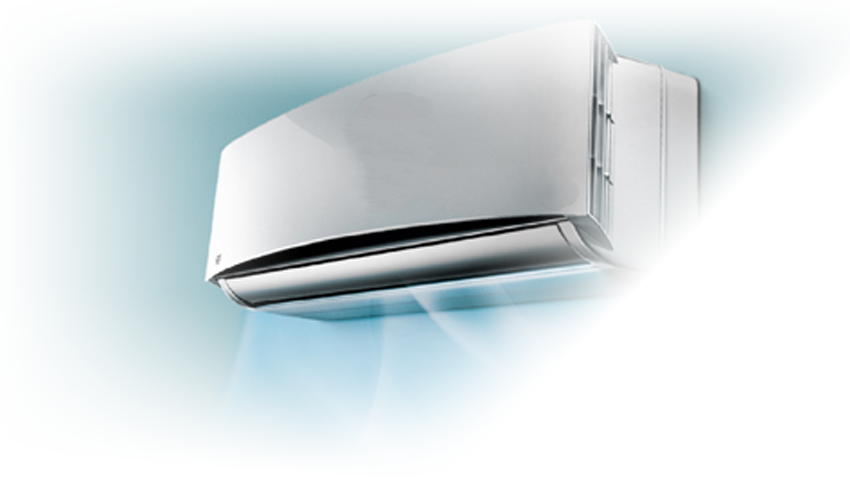
Inverter air conditioners
Inverter models operate in a constant mode according to the principle of inverting alternating current with the required frequency. During operation, the engine speed of the compressor changes smoothly, the power is regulated, which allows you to maintain a comfortable temperature in the room according to the specified parameters with a slight deviation within 0.5 degrees.
Conventional air conditioners
Conventional air conditioners, also called linear, operate at a fixed power parameter. When the set temperature is reached, the device automatically turns off. The engine is restarted when the room temperature changes by 1-20 above the set value.
Classification of air conditioners by purpose
According to their purpose , climate devices are divided into three types: domestic, commercial and industrial. They differ in terms of power, performance and dimensions.
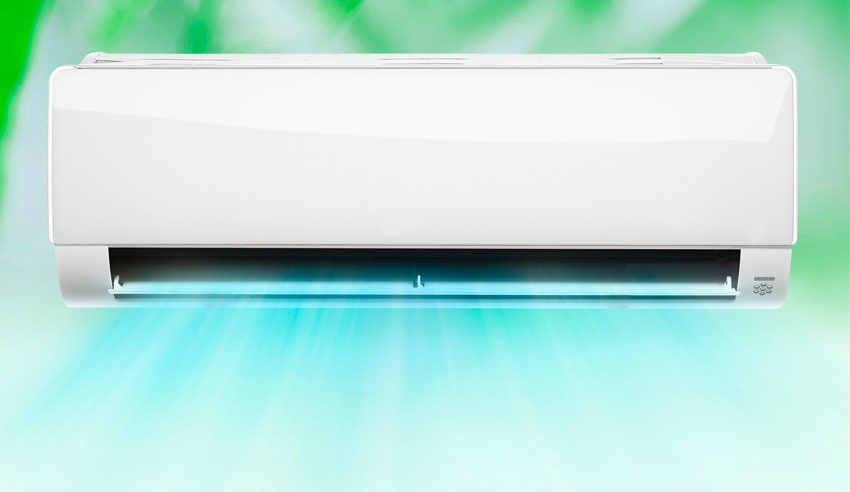
Household air conditioners
Household models are designed for use in private homes, apartments, offices and other small work spaces. The power of household appliances varies between 1-10 kW, which is quite enough for air conditioning in a room with an area of 10 to 100 m2 as much as possible.
Types of household air conditioners (by installation method):
- Monoblock: mobile, window.
- Split systems (two-block): wall-mounted, multi-split.
Features of household models:
- cute design;
- compact dimensions;
- low noise level during operation;
- modern models have many additional functions that allow not only to cool the air in the room, but also to clean it from dust, bacteria, unpleasant odors, etc.
The average service life of household air conditioners is 8-10 years.
Semi-industrial (commercial) air conditioners
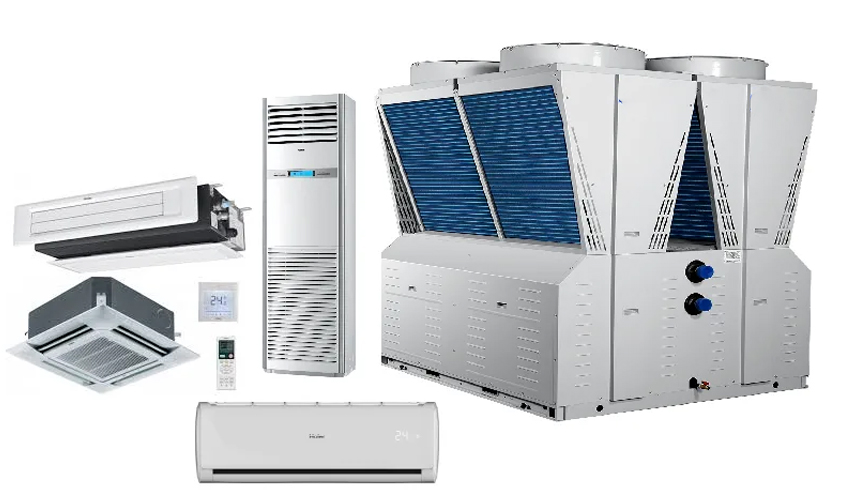
Semi–industrial air conditioners are installed in commercial premises - in catering establishments, banks, shops, shopping malls with an area of 100 to 350 m2.
Types of commercial air conditioners (by installation method):
- cassette;
- channel;
- ceiling;
- columns;
- multi-split systems.
- The maximum power parameter of commercial devices is 30 kW. The working life is designed for 10-20 years.
Industrial air conditioners
Industrial air conditioners are the most productive climatic equipment that provides a comfortable temperature regime in large rooms. They are installed in large state institutions, in exhibition and shopping centers, in theater and concert halls, in indoor stadiums, in workshops, in medical institutions, in industrial buildings, etc.
The power of such devices ranges from 200 to 10,000 kW. The service life is at least 20-30 years. Despite the high cost, centralized installation of one industrial air conditioner in a large building with several floors will eventually cost less than installing conventional split systems in each room. The choice of the model is carried out taking into account the area of the building, the purpose and the planned intensity of operation.
Features of split systems
Split systems are two-unit air conditioners consisting of an external and an internal module. One unit is installed on the street side, the second one is installed indoors. They are connected to each other by an electric cable and copper tubes through which the refrigerant circulates.Due to the design features of the split systems, they are practically silent in operation, since the noisiest unit of the system - the compressor – is located in an outdoor unit installed on the street side. Compact in size, the indoor unit has an attractive design and fits well into the interior of the living space. It can be installed almost anywhere in the room, where it will be most convenient for the owners.
Multi-split system
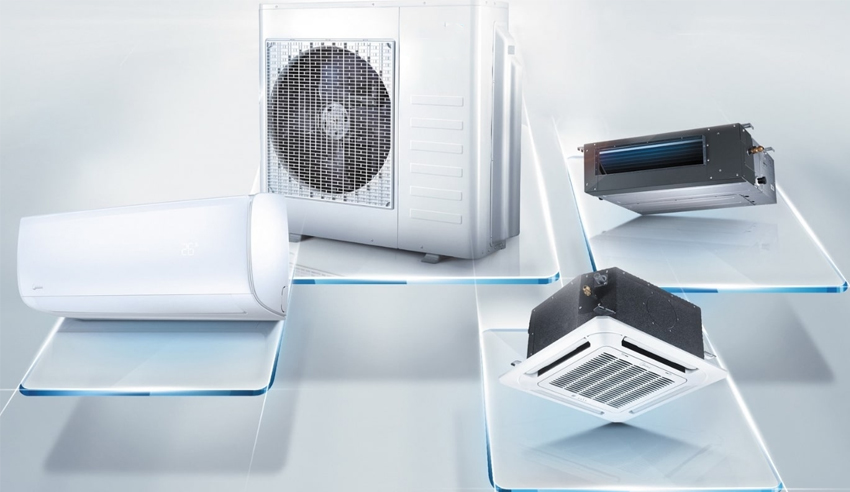
An improved kind of split system is multi-split. The peculiarity of such equipment is as follows: you can connect not one, but several internal modules to the external unit, from 2 to 4-5. Each indoor unit is controlled by an individual remote control.
Advantages of a multi-split system:
- eliminates the need to hang several blocks from the street side;
- low noise level during operation;
- universal technology provides an optimal microclimate in every room;
Multi-systems are supplied in ready-made kits consisting of one outdoor and several indoor units. The buyer should calculate in advance the required capacity of the climate equipment and the optimal number of indoor units. It is unacceptable to change the total power parameter of the devices or their number during operation.
Cassette air conditioner.Cassette air conditioners assume the installation of an indoor unit behind a suspended ceiling. Cooled air is discharged through the lower panel of the module, closed by a decorative grille. The main advantages of a cassette air conditioner are invisibility and uniform distribution of air flow in 4 directions. Such models are effective for cooling large rooms |
 |
Column (cabinet) air conditioning.Column air conditioners have large dimensions and resemble a large household refrigerator in appearance. Such models assume a floor installation. They are used in large rooms – in conference halls, warehouses, workshops, hotel halls, etc. The flow of cooled air is distributed directly, so it is unacceptable to be in close proximity to the device. |
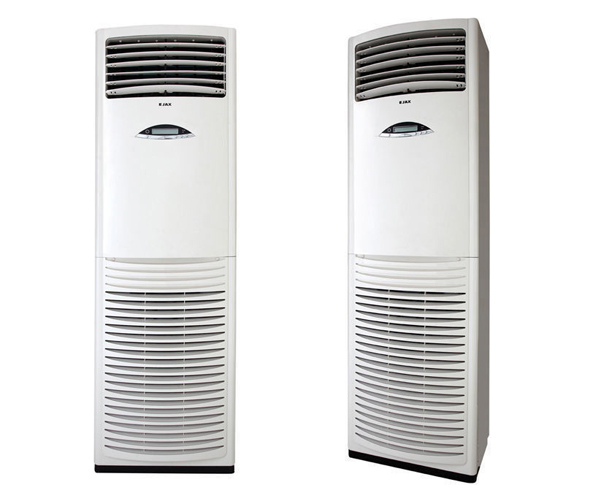 |
Channel air conditionerDuct air conditioners, like cassette models, are installed behind a suspended ceiling. But in this case, the cooled air is distributed through a system of ducts placed between the base of the ceiling and the floor slabs. This type of equipment can be used for air conditioning in several rooms at once by creating an extensive duct system. But using this type of equipment, the owner will not be able to individually regulate the air temperature in different rooms, that is, the air flow originating in all rooms will have the same temperature. |
 |
Floor-ceiling type air conditionersFloor-ceiling air conditioners are universal models of climate equipment that can be installed both on the floor and on the ceiling. The installation location is selected taking into account the needs: if the air conditioner is used primarily for air cooling, it is better to install the device on the ceiling, which will allow the cooled air flows to be evenly distributed downwards, providing a comfortable microclimate. If the owner intends to use an air conditioner for heating, the best solution would be a floor installation. Warm air will rise, covering a large space. |
 |
Monoblock air conditioners
Monoblock air conditioners are divided into two types: mobile and window. They differ in design features and installation method.